FC Bayern’s Signature Signings Episode 3: 2001-2005
In this series we identify the best signings in each transfer window over a number of years, which we dub the “signature signings”. We make our judgement based on four criteria: Length of club membership, tangible successes, transfer fee, and “it factor”. We have explained these criteria in more detail in the first article of the series, which covered the years 2011-2015.
There are a few further constraints. Players who initially joined Bayern on loan and were signed on a permanent basis only later like Kingsley Coman, for example, are evaluated based on the time of their initial arrival at the club. Winter transfers are included as well. This article covers the period from 2000/01 to 2004/05. Only signed players count. Loan returnees are not included, the same as youth players.
FC Bayern began the season 2000/01 with the clear objective to win their third consecutive Bundesliga championship. This had been accomplished only three times before: Two times it was Bayern themselves (72-74, 85-87) and once Borussia Mönchengladbach (75-77). However, since the reunification in 1990 no team had accomplished this feat in the newly formed all-German Bundesliga. In 2000/01, FC Bayern was finally able to end that spell.
The next years saw some ups but also some downs for Bayern. Definite highlights were the Champions League title in 2001 and the double in 2003/04, lowlights included the third place in the league in 2001/02 and the elimination in the Champions League group stage in 2002/03. To regain their accustomed supremacy in the domestic league, Bayern recalled their tried and tested method from the 90s to sign the best players from the most persistent competition in the Bundesliga. They added to this basis by select international signings from abroad, including our first signature signing.
Season 2000/01: Willy Sagnol
Signed for €7.7m from AS Monaco, 2000-2009, 277 games, 8 goals, 50 assists, 10 titles, highest market value: €10m
Further signings: Ciriaco Sforza for €2.3m from 1.FC Kaiserslautern, Alou Diarra free signing from Louhans-Cuiseaux FC
Wiiiilllllllyyyyyy! – there are only few things indicating that a player has made his way into the hearts of the fans more strongly than their own battle cry. Willy Sagnol signed for Bayern as a 23-year old with over 100 league games at Monaco under his belt. Bayern’s scouting department had presumably been attracted to him by the recent success of the French national team as well their previous lucky draw with a French player in Bixente Lizarazu, whom they had signed 3 years earlier. But whereas the latter had been a familiar face as a European and World Champion with France, Sagnol was a largely unknown player among fans.
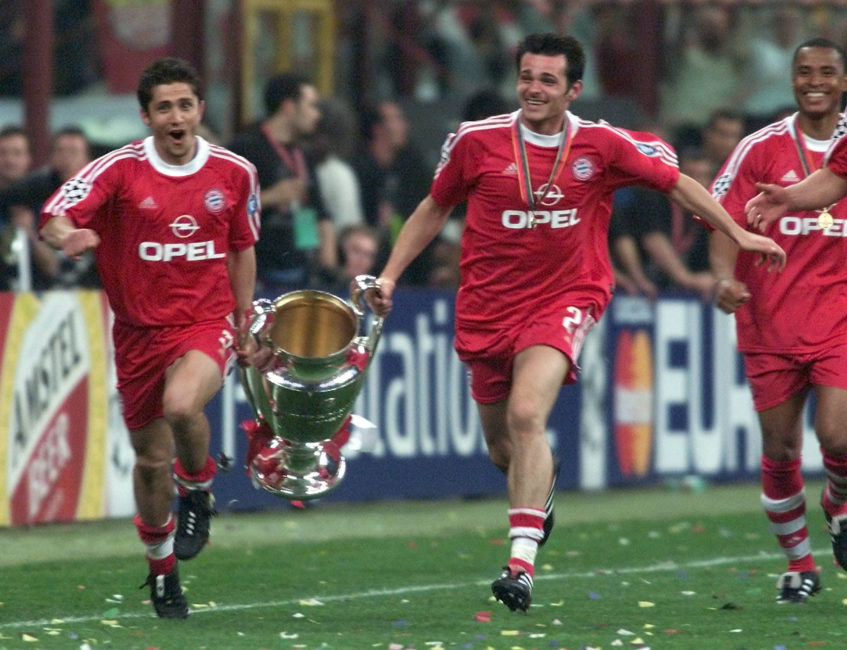
(Image: Gabriel BOUYS / AFP)
This was about to change very quickly. Sagnol immediately became a first team regular at right back. He witnessed the drama in Hamburg as a player on the pitch as well as the Champions League final against Valencia, where he was brought off at half time. But in contrast to the smaller Lizarazu, his style of play was not so much based on technique and cleverness as on physicality and endurance. Unfortunately, his time at Bayern came to an unsatisfying end after a string of injuries in 2009. Sagnol accused Bayern’s management of not keeping their word given to him at his contract extension of making him team captain. His later return to Bayern as an assistant coach to Carlo Ancelotti and a one game interim coach after the Italian had been let go was not an outright success story, too. Yet for us fans, with his irresistible surging runs down the flanks he will forever have a place in our memories.
Season 2001/02: Claudio Pizarro
Signed for €7.54 from Werder Bremen, 2001-2007 and 2012-2015, 327 games, 125 goals, 53 assists 12 titles, highest market value: €12m
Further signings: Robert Kovač for €7.5m from Bayer Leverkusen, Niko Kovač for €5m from Hamburger SV, Pablo Thiam free signing from VfB Stuttgart
In Claudio Pizarro another fan favourite signed for Bayern in summer 2001. The 22-year old joined from Bremen, where he had scored 22 goals in two seasons. The two goals against them especially would have stayed in the minds of the Bayern management. Pizarro was never the star in Bayern’s front line, but always a more than reliable number two in attack in Bayern’s common 4-4-2 of the time. In his first two years at the club, he formed and ingenious partnership with Giovanne Élber in attack, the two scoring 68 goals between them during that time. After Élber had left, he continued on as the sidekick of Roy Makaay for another four years, scoring fewer than 10 goals only once in the 2006/07 season.
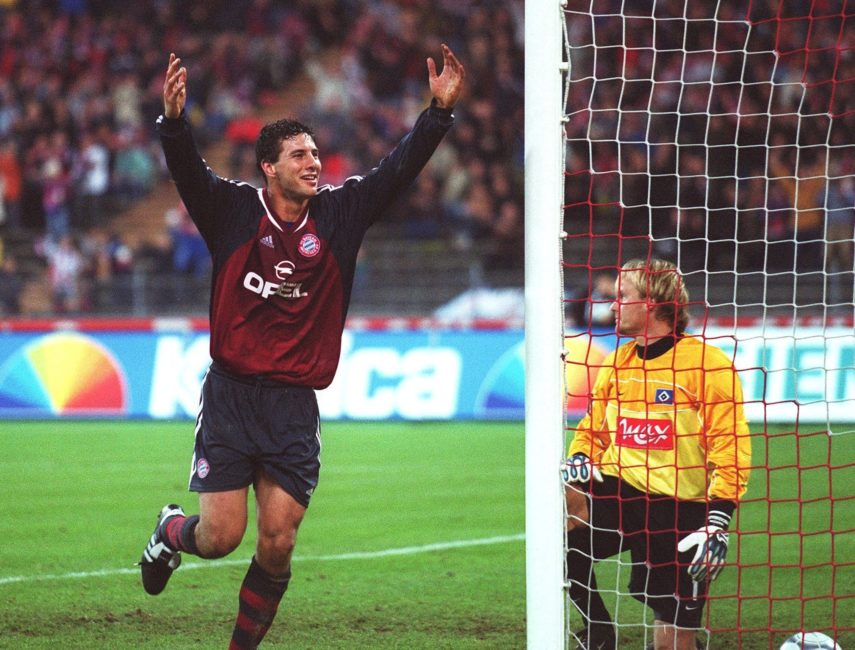
(Image: Alexander Hassenstein/Bongarts/Getty Images)
After an unfortunate year in London, “Pizza” gave his career a fresh reboot. He went back to Bremen before rejoining Bayern in 2012. Although at 34 he had already lost a lot of his agility and athleticism, his cleverness and his nous for dangerous situations was still intact. The perfect number two became a perfect number three. Pizarro did not play much, but he could always be relied on when he was needed. At Easter 2013 he scored four goals against Hamburg in a 9-2 thrashing. In the following season, he scored ten times in only 682 minutes. When he finally hung up his boots at Bremen in 2020 (where he had returned for the final spell of his career), this would have brought tears to many a Bayern supporter’s eyes too.
Season 2002/03: Michael Ballack
Signed for €6m from Bayer Leverkusen, 2002-2006, 157 games, 62 goals, 40 assists, 6 titles, 3 x German football player of the year, highest market value: €35m
Further signings: Zé Roberto for €9.5m from Bayer Leverkusen, Sebastian Deisler for €9m from Hertha BSC
The summer of 2002 had the potential of going on record as the best transfer period in the history of FC Bayern. In Michael Ballack the club had signed Germany’s best footballer, in Sebastian Deisler it’s greatest talent, and in Zé Roberto an international star of extraordinary quality. That in the case of Sebastian Deisler at least one of these promises remained unfulfilled was due to very bad injury luck and a mind consumed with self-doubt. The story of Sebastian Deisler is one of the saddest in professional football in the last 20 years and shows the many blind spots this business has had in its dealings with depression and mental illness.
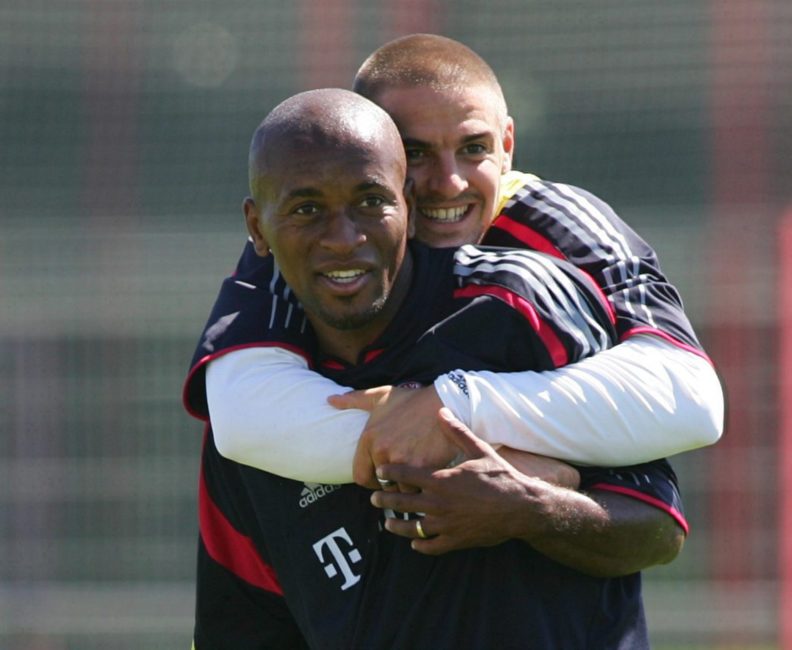
(Image: Andreas Rentz/Bongarts/Getty Images)
Yet the signature signing of this year was undoubtedly Michael Ballack. He arrived as a bit of a tragic hero in Munich. The World Cup 2002 was emblematic for his entire career up to that point (remember the own goal against Unterhaching in 2000 or his treble-runner-up season with Leverkusen in 2002). After an outstanding performance with important goals against the USA and South Korea, he missed the final due to a second yellow card ban and could only watch on helplessly as his teammates lost the match against Brasil. But at Bayern he was the undisputed leader on the pitch from the first day on.
The label “world class” is often handed out quite liberally nowadays. But the 98-times German international is perhaps the one Bayern player of the rather bland 2000s who unambiguously deserved this distinction. Ballack directed, Ballack distributed, Ballack was always available for a pass, and Ballack finished in clinical fashion. The late run into the box that we know from Leon Goretzka today was made famous by him. His aerial game was terrific and his shot from distance superb. But when he left the club after the World Cup in 2006, in the eyes of many Bayern fans he left as a villain. When the Bayern hierarchy rescinded an offer for a contract extension to him, they met this with great approval. This rupture would never be healed. And so one of the greatest midfielders of his generation never received the farewell he was arguably due.
Season 2003/04: Roy Makaay
Signed for €19.25m from Deportivo La Coruña, 2003-2007, 183 games, 103 goals, 35 assists, 4 titles, highest market value: €25m
Further signings: Martin Demichelis for €5m from River Plate, Tobias Rau for €2.25 from VfL Wolfsburg
It is never easy to be next in line to succeed upon a fan favorite. Especially not for the most expensive signing in club history. But when Roy Makaay replaced Giovanne Élber in attack in the summer of 2003, the Dutchman managed this with a simple trick: The thoroughbred striker, who had eliminated his new employer in the Champions League with his old club only the year before, just scored with every chance he got. He collected 44 goals in his first two years at the club and another 33 in the following two.
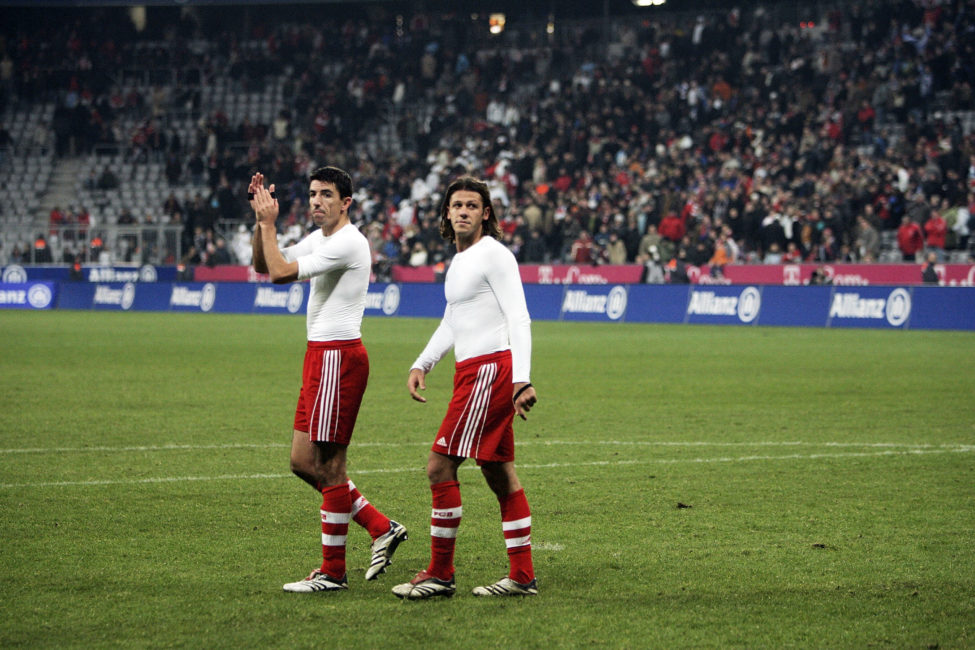
(Image: Johannes Simon/Bongarts/Getty Images)
His nickname “Phantom” was a dead giveaway. Most of the time, neither the crowds nor his opponents saw him coming before the ball was already nestling in the net. This was probably epitomized best by his goal after no more than 10 seconds in the game against Real Madrid in his final season at the club in 2006/07. A recovery, a run, a look, a finish – that is all that Makaay needed. Neither on this night in spring nor at any other time. His time at Bayern ended the same way it had to begun. When the club singed his designated successor Luca Toni in 2007, he left towards Eindhoven leaving the Italian with the difficult task to repeat his trick of following in the footsteps of a fan favorite.
Season 2004/05: Lúcio
Signed for €12m 12 from Bayer Leverkusen, 2004-2009, 218 games, 12 goals, 12 assists, 6 titles, highest market value: €23.5m
Further signings: Torsten Frings for €9.25 from Borussia Dortmund, Andreas Görlitz for €2.5m 2,5 from 1860 München, Vahid Hashemian for €2m from VfL Bochum, Bixente Lizarazu on loan from von Olympique Marseille
It sounds incredible, but Lúcio is in fact the fourth player in as many years who joined Bayern coming from Leverkusen. Rainer Calmund’s fine nose for talent was only trumped by Uli Hoeneß’ war chest. The Brazilian defender had had three very convincing seasons at Leverkusen and was meant to become Bayern’s new anchor in defense. Whether he was accompanied by Kovač, Linke, van Buyten or Demichelis – Lúcio was the one constant fixture in Bayern’s back line.
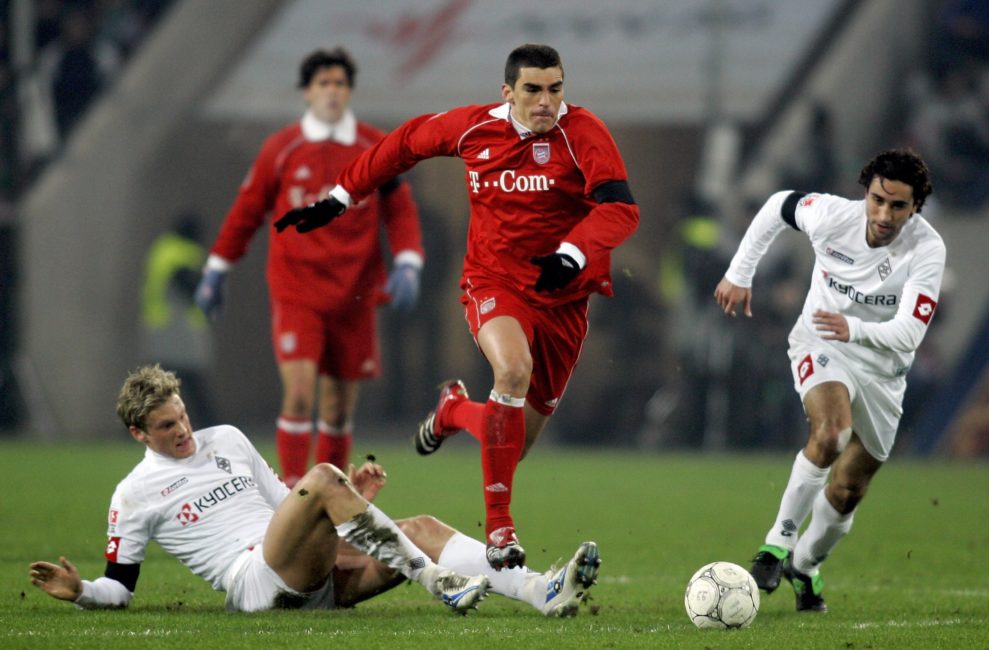
(Image: Lars Baron/Bongarts/Getty Images)
The Brazilian’s biggest strength was undoubtedly his robust tackling, which he nevertheless managed to bring to bear with such finesse that the opponents never quite knew how they lost the ball. His marauding runs forward were equally epic. And who can blame him? Are we not all tempted to challenge our inner Pelé every now and then when we play ourselves? It was left to Hitzfeld to rein that urge in and by ordering Lúcio to stay in his own half, to which he reacted not by altogether stopping his runs but ending them at the halfway line. But he received the first serious setback only when Louis van Gaal arrived in the summer of 2009. Lúcio decided to move on to Inter where he won the treble in his first season with his new club – winning the Champions League final against his former side. He had left Bayern in tears, as he himself once later said, a feeling many Bayern fans would have shared after the final in 2010…
So much for the years 2001 to 2005. Here you can find part 1 and part 2 of our series, covering the years 2006 to 2010 and 2011 to 2015. What is your view on the topic? What selections do you disagree with? Whom can we not miss to mention in our next part from 1996 to 2000? Let us know in the comments.




 August 6, 2020
August 6, 2020 


